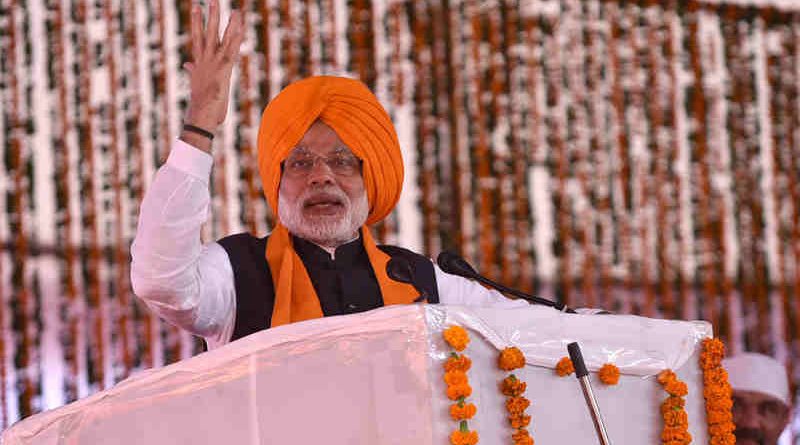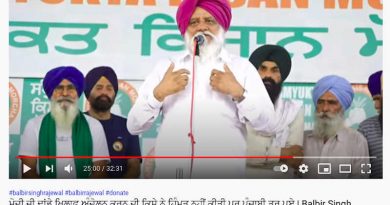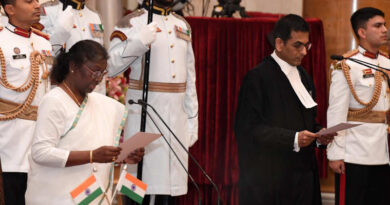India Is a Dangerous Country for Journalists: RSF Press Freedom Index

India Is a Dangerous Country for Journalists: RSF Press Freedom Index
With an average of three or four journalists killed in connection with their work every year, according to RSF, India is one of the world’s most dangerous countries for the media.
By RMN News Service
The 2024 World Press Freedom Index released today (May 3) by Reporters Without Borders (RSF) shows that India is increasingly becoming a dangerous place for journalists.
India’s rank on the RSF Index fell from 142 in 2021 to 150 in 2022 to 161 in 2023, and now it is 159 in 180 countries – which is a manifestation of the fact that press freedom is constantly under state attack.
According to RSF, with violence against journalists, highly concentrated media ownership, and political alignment, press freedom is in crisis in India, which has been ruled since 2014 by prime minister (PM) Narendra Modi, leader of the Bharatiya Janata Party (BJP) and embodiment of the Hindu nationalist right.
In its report, RSF says that the Indian media landscape is abundant in this country of 1.4 billion inhabitants and 197 million homes with TV sets. The country has nearly 900 privately owned TV channels, half of which are dedicated to news.
Doordarshan, the public TV broadcaster, operates in 23 languages and reaches millions of viewers. Around 140,000 publications are published in more than 20 languages, including some 20,000 daily newspapers. Their combined circulation totals more than 390 million copies.
However, online news, particularly on social media, is favoured by a younger population and has overtaken print media as the main source of news. Radio news is still a state monopoly, with All India Radio (AIR) owned by the government.
India’s media – according to RSF – has fallen into an “unofficial state of emergency” since Narendra Modi came to power in 2014 and engineered a spectacular rapprochement between his party, the BJP, and the big families dominating the media.
Reliance Industries group’s magnate Mukesh Ambani, a personal friend of PM Modi, owns more than 70 media outlets that are followed by at least 800 million Indians. The NDTV channel’s acquisition at the end of 2022 by Gautam Adani, a tycoon who is also close to Modi, signalled the end of pluralism in the mainstream media.
Recent years have also seen the rise of “Godi media” (pun for designating Modi’s “dogs”) – media outlets that mix populism and pro-BJP propaganda. Through pressure and influence, the old Indian model of a pluralist press is being called into question.
The prime minister is very critical of journalists, seeing them as “intermediaries” polluting his direct relationship with his supporters. Indian journalists who are very critical of the government are subjected to harassment campaigns by BJP-backed trolls.
Freedom of the press is not mentioned as such in the constitution, but it is protected by the right to freedom of expression. However, governments have never shied away from using colonial era laws, such as those relating to sedition, defamation and anti-state activities, to suppress the media.
Anti-terrorism laws are increasingly used against journalists. The main opposition party, the Indian National Congress, and other regional parties have also used legal provisions against journalists for intimidation purposes and as retaliation.
Modi has introduced several new laws that will give the government extraordinary power to control the media, censor news and silence critics, including the 2023 Telecommunications Act, the 2023 draft Broadcasting Services (Regulation) Bill, and the 2023 Digital Personal Data Protection Act.
RSF adds in its report that India’s media are primarily funded by advertising revenue, the main source of which is the government – under Narendra Modi, billions of dollars of public funds have been spent on advertising.
Both central and state governments put pressure on the media to censor their content, through this funding, on which many small media outlets depend.
While, on the one hand, the government has tightened its grip on both state and privately owned media, media ownership has become heavily concentrated in the hands of a few conglomerates that are mostly allied with the government, as evidenced by the Adani group’s power grab.
This multinational conglomerate led by Gautam Adani, a close ally of Modi with interests in port development, energy and mining, took control of NDTV, one of the last bastions of critical journalism.
The great diversity of Indian society is not reflected in the media landscape. The journalism profession, especially in managerial positions, remains the prerogative of Hindu men from upper castes – a bias that has repercussions on the angles and subjects of articles and reports.
For example, on major evening talk shows, women represent less than 15% of the guests. Hindu nationalist ideology is experiencing a rise in power. Most TV media outlets, particularly in Hindi, devote a significant portion of their airtime to religious news, sometimes openly advocating hatred of Muslims.
With an average of three or four journalists killed in connection with their work every year, according to RSF, India is one of the world’s most dangerous countries for the media.
Journalists who are critical of the government are routinely subjected to online harassment, intimidation, threats and physical attacks, as well as criminal prosecutions and arbitrary arrests.
They can be victims of violence, from police officers and political activists, as well as criminal groups and corrupt local officials. Proponents of Hindutva, the ideology of the Hindu far right, call for popular revenge against critics branded as “traitors” and “anti-national”.
Terrifying coordinated campaigns of hatred and calls for murder are conducted on social media, campaigns especially violent when they target women journalists, whose personal data is divulged.
The situation also remains very worrisome in Kashmir, where reporters are often harassed by police and paramilitaries, with some being subjected to so-called “provisional” detention for several years.
Courtesy: RSF






